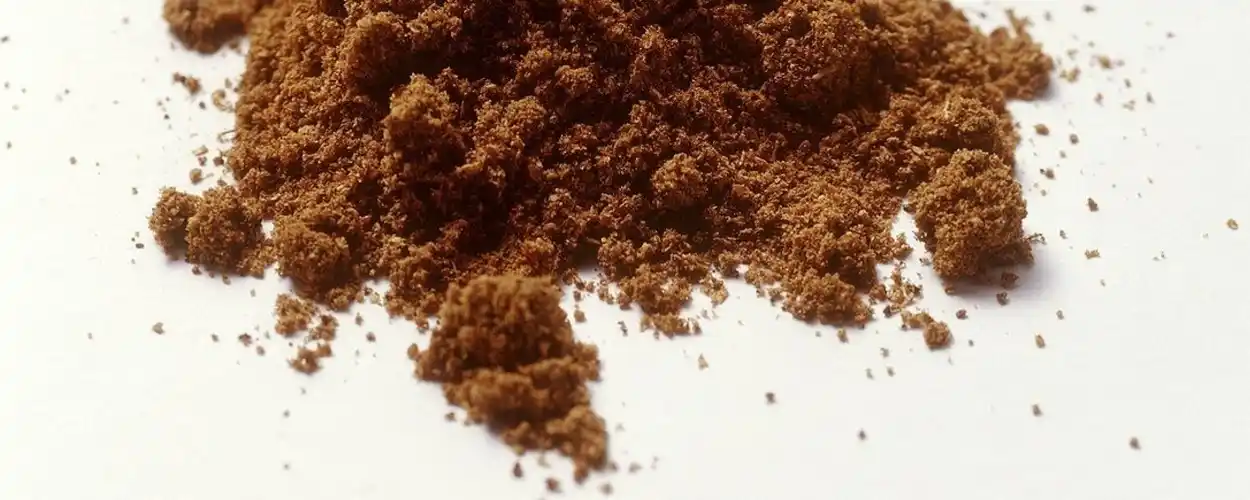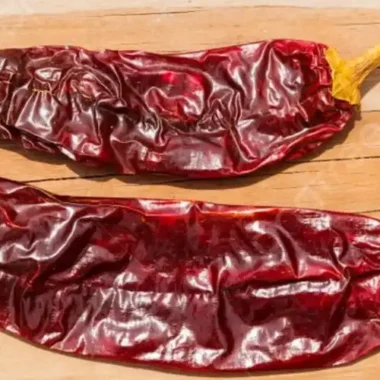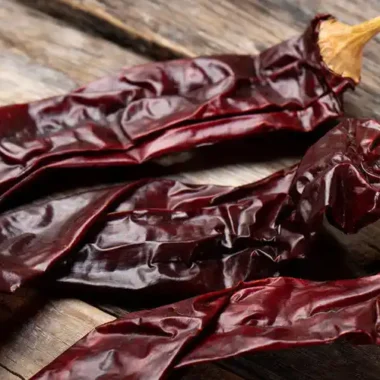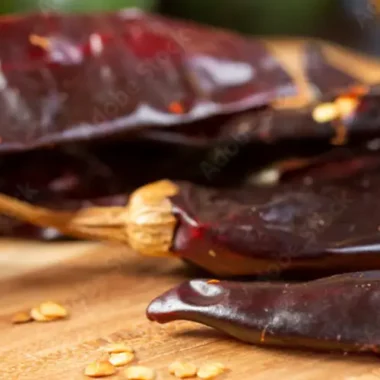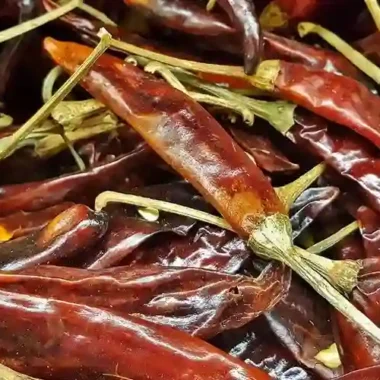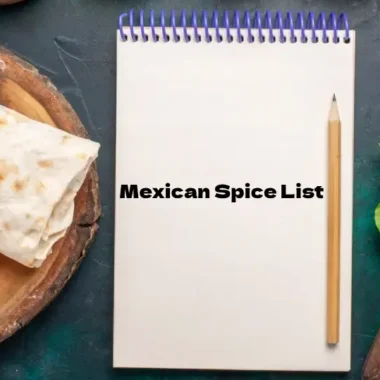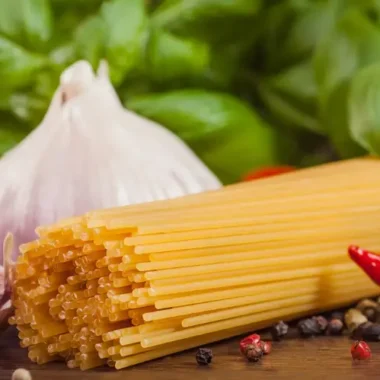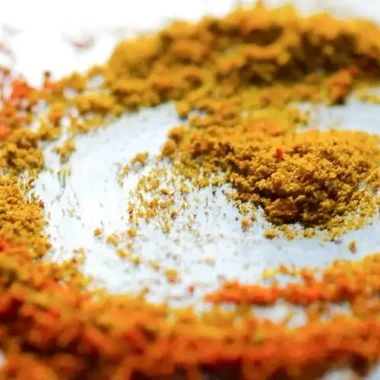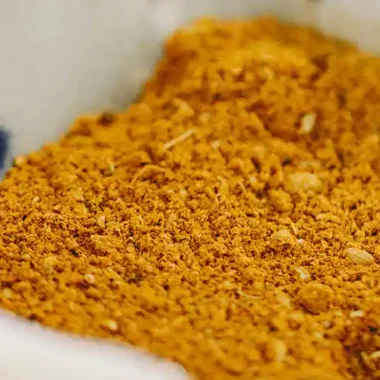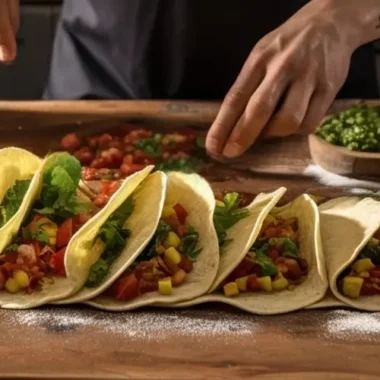Garam masala is a blend of warm spices that represents the cornerstone of Indian cuisine. What spices are in garam masala? It has a complex composition with layered flavors that have been known to enrich dishes and add depth. Unlike single spices, garam masala is a blend of several spices, making it versatile and unique in every region and even household it’s used. This article will cover all that you want to know about garam masala: the history, what spices are in garam masala, and, finally, the culinary uses. Whether you are a professional chef, or you love spices, you will learn more information about Garam masala.
What is TheGaram Masala
So, what is Garam Masala? The mix known as ‘Garam Masala’ can be translated literally as ‘hot spice blend’ however, this so-called ‘hot’ is not in the typical hot spicy taste but, rather the warmth that this added to the dish. In fact, garam masala is not spicy and contains no chilies as found in other chili-based spices, rather what spices are in garam masalas such as cumin, cardamom, cloves, and cinnamon are warm spices. In terms of flavor, it has a sweet, savory, and even slightly pungent flavor, which is why spice is an essential part of Indian cuisine.
Garam masala is usually added in the last stage of cooking to preserve the delicate balance of its spices. What spices are in garam masala blend varies across India and people of each region add the spices based on local spices and culinary traditions. There are some garam masala recipes that include only 5 or 6 spices while there are those that are more than a dozen spices, and even more, making it more complex.
What Spices Are in Garam Masala Powder?
Garam masala is a blend of multiple spices, each bringing its own unique character to the mix. The exact answer of what spices are in garam masala varies based on region and personal preference. However, some core spices are typically present in most garam masala blends:
-
Cumin
Known for its warm, earthy flavor, cumin provides the base for most garam masala blends. Cumin imparts a slight nuttiness and depth to the mix.
-
Coriander
Coriander adds brightness and balance to the blend with its citrusy and floral notes and helps balance the richness of the other spices.
-
Black Pepper
Black pepper adds a subtle and sharp heat that enhances the savory aspect of the blend, contrasting well with the sweeter spices.
-
Cloves
Cloves are an essential part of what spices are in garam masala due its pungent and aromatic buds that add a sweet-spicy depth to the mixture.
-
Cinnamon
Often used in stick form, cinnamon adds a sweet, woody fragrance that is essential to the warming quality of garam masala.
-
Cardamom
Green cardamom pods are commonly used in garam masala to offer a sweet and floral aroma that lightens the blend. Sometimes, black cardamom is used for a more intense, smoky flavor.
-
Nutmeg and Mace
Nutmeg is usually added in small quantities to provide a sweet, nutty undertone, rounding out the spice mix. On the other hand, mace (the outer covering of nutmeg) adds warmth.
These core spices make up the foundation of what spices are in garam masala, but many variations may include fennel seeds, bay leaves, star anise, and even dried ginger.
Garam Masala Substitute
If you run out of garam masala or can’t find it in your local store, don’t worry. You can substitute it with other spice blends or create your own mix using the knowledge you acquired about what spices are in garam masala and use common spices found in most kitchens. Some possible substitutes include:
- Allspice + Cumin + Coriander
Allspice adds a blend of cloves, cinnamon, and nutmeg-like flavors, while cumin and coriander bring earthiness. This blend offers a suitable garam masala substitute that you can use to replicate the spices in garam masala flavors.
- Allspice and Cinnamon
Another garam masala substitute is a mix of ground allspice and cinnamon that can replicate some of the sweet and warming qualities of garam masala. You can enhance the blend further by adding a pinch of cumin and cloves if you have them.
- Curry Powder
While curry powder is different in composition than what spices are in garam masala, curry powder can mimic the warmth of garam masala, especially if you’re looking for a quick substitute for garam masala. However, it contains turmeric, which gives it a yellow color and a slightly different flavor profile. Also, curry powder is often spicier and more pungent due to the inclusion of chilies.
- DIY Garam Masala
If you have individual spices on hand, you can quickly create a substitute for garam masala by combining ground cumin, coriander, cinnamon, black pepper, and cloves.
While garam masala substitutes can work in a pinch, knowing what spices are in garam masala and making it yourself ensures you get the full depth of flavor that only freshly ground spices can offer.
List of Indian Spices Included in Garam Masala Powder
Indian cuisine is renowned for its extensive use of spices, and garam masala is no exception. The spices in garam masala are carefully selected to create a balance of flavors—warming, sweet, and pungent—that is integral to many Indian dishes. Here is a list of what spices are in garam masala powder:
The primary spices in traditional Indian garam masala include:
- Coriander: Offers citrusy brightness that cuts through the richness.
- Cumin: Adds an earthy and warm undertone.
- Black Pepper: Provides a mild heat and enhances savory flavors.
- Cardamom: Gives a sweet, floral aroma and flavor.
- Cinnamon: Bring warmth and a mild sweetness to the blend.
- Cloves: Lends a strong, sweet, and slightly bitter flavor.
- Nutmeg: Adds a subtle, sweet nuttiness.
Some variations of what spices are in garam masala may also contain:
- Bay Leaves
- Star Anise
- Mace
- Fennel Seeds
- Dried Ginger
- Dried Red Chilies
- Turmeric
- Caraway Seeds
The combination of these spices can change the flavor profile slightly, allowing for regional differences in taste.
Garam Masala vs. Curry Powder
Though garam masala and curry powder are often confused, what spices are in garam masala and curry powder are fundamentally different spice blends used for distinct purposes. Here’s how they compare:
- Ingredients
Curry powder typically contains turmeric, which gives it a yellow color, along with spices like cumin, coriander, and chilies. Garam masala, on the other hand, includes a variety of warming and sweet spices, such as cinnamon, cardamom, cloves, and black pepper.
- Flavor Profile
Curry powder has a stronger, spicier flavor with a slight bitterness due to turmeric and chilies. Garam masala, on the other hand, focuses on warmth and is often more aromatic with a balance of sweet and savory notes but no added heat.
- Use in Cooking
Curry powder is often used at the beginning of cooking to form the base of a dish, whereas garam masala is added toward the end to preserve its delicate flavors.
- Origin
Curry powder is a British invention created to imitate Indian spices, while garam masala is an authentic Indian spice mix.
History of Garam Masala
The origins of garam masala can be traced back to ancient India, where it was initially used for its medicinal properties in Ayurvedic medicine. The warming spices in garam masala were believed to stimulate digestion and boost circulation, increasing body heat, which was useful in combating cold weather in northern India.
Over time, garam masala evolved from its medicinal roots to become a culinary staple across India. Different regions began creating their own versions of the spice blend, each with a unique line of what spices are in garam masala and flavor profiles. Today, garam masala is a versatile blend used in both traditional and modern recipes worldwide.
Optional Spices
While garam masala typically includes a core set of spices, there are several optional ingredients that can be added to customize the blend according to regional preferences or personal taste. Some of the optional spices include:
-
- Mace: Derived from the outer covering of nutmeg, mace adds a more intense warmth and sweet-spicy flavor.
- Bay Leaves: Bay leaves enrich the blend with their subtle aroma and slightly bitter taste. It is usually one of what spices in garam masala, but not always.
- Star Anise: Star anise spice provides a mild licorice flavor that can add an intriguing depth to the blend.
- Fennel Seeds: Fennel imparts a sweet, slightly licorice-like flavor that can balance the stronger spices in the mix.
- Dried Ginger: Ground ginger contributes a peppery warmth and is sometimes included in garam masala for an extra kick.
- Dried Red Chilies: Introduce heat and spice.
- Caraway Seeds: Caraway seeds impart a nutty, earthy flavor that enhances the complexity of garam masala.
- Turmeric: Though not a traditional part of garam masala, some variations include turmeric for its color and earthy flavor.
These optional spices allow you to tailor what spices are in garam masala to suit your culinary needs, whether you want a more robust, spicy blend or a milder, aromatic one.
Get A Comprehensive Guide to Different Types of Bay Leaves
How to Make Garam Masala Powder at Home
There is no single “authentic” recipe for garam masala because what spices are in garam masala varies across regions in India and even from one family to another. However, a basic version of garam masala typically contains some essential spices that are roasted and then ground into a fine powder. Here’s an example of how to make garam masala spice:
Ingredients
- 4 tablespoons cumin seeds
- ½ cup coriander seeds
- 1 tablespoon black peppercorns
- 2 tablespoons cloves
- 6 cinnamon sticks
- 1 teaspoon cardamom pods (green or black)
- 4 bay leaves
- 1 whole nutmeg (grated)
- Optional: 1 star anise, 1 teaspoon fennel seeds
Instructions
-
Toast the Spices
In a dry pan, lightly toast the cumin, coriander, peppercorns, cloves, cinnamon, and cardamom over medium heat for 2-3 minutes, stirring continuously to prevent burning.
-
Cool the Spices
Allow the toasted spices of garam masala to cool completely before grinding.
-
Grind the Spices
Transfer the cooled spices to a spice grinder or mortar and pestle then grate the nutmeg into the garam masala blend and crumble the bay leaves into the powder.
-
Store Properly
Store your garam masala homemade blend in an airtight container in a cool, dark place, and for optimal flavor and use within 6 months.
Homemade garam masala is superior to store-bought versions as it contains freshly toasted spices, offering more vibrant flavors and aromas. This authentic recipe is versatile enough for use in various dishes, from hearty curries to light vegetable dishes, offering a deep and balanced flavor.
How Do You Use Garam Masala?
What spices are in garam masala make it a versatile blend that can be used in various ways in cooking? The spice blend is typically added at the end of cooking to preserve its delicate flavors, but it can also be used in marinades or sprinkled on finished dishes for an aromatic touch. Here are a few common uses:
- Curries and Stews: Add garam masala toward the end of cooking for a burst of flavor.
- Marinades: Garam masala can be mixed with yogurt or oil and used as a marinade for meats and vegetables.
- Vegetables: Roasted or sautéed vegetables are often enhanced with a sprinkle of garam masala, adding warmth and richness.
- Soups and Lentils: Stir in a pinch of garam masala just before serving to add warmth to soups or lentil dishes.
Whether you’re making a traditional Indian curry or experimenting with international flavors, garam masala adds an aromatic and flavorful touch to a wide variety of dishes.
Read More about What are Garam Masala Ingredients and Its Different Uses
Culinary Uses of Garam Masala
Garam masala is a versatile spice blend that enhances the flavor of many dishes. Here are some of the most common culinary uses for garam masala:
-
Tandoori Chicken
Garam masala is often added to the marinade for this popular grilled dish.
-
Grilled Meats
Rub garam masala onto meats like chicken, lamb, or fish before grilling for a fragrant, spiced crust.
-
Curries
Whether it’s a rich lamb curry or a simple vegetable curry, garam masala adds depth and warmth to the dish.
-
Rice Dishes
Add a sprinkle of garam masala to biryanis or pilafs to elevate the flavor.
-
Lentil Dishes
Used as a finishing touch in lentil-based dishes.
-
Soups
A dash of garam masala at the end of cooking can transform a simple soup into something aromatic and flavorful.
From traditional Indian recipes to modern global cuisine, garam masala is a versatile spice blend that enhances the flavors of a wide range of dishes.
Conclusion
Garam masala is a mixture of spices which is essentially one of the cornerstones of Indian cuisine, bringing depth and warmth to any dish that it accompanies. Knowing what spices are in garam masala and how to use garam masala perfectly will undeniably enrich your culinary experiences, no matter if you’re making garam masala at home or using the purchased one. Essentially, this combination allows you to enrich the classic recipes as well as the modern dishes, from curries to roasted vegetables and many more.
If you’re looking to infuse your dishes with the true taste of Indian cuisine, try ZestyHut’s exclusive Garam Masala Spice. Crafted by ZestyHut’s seasoned experts with years of experience in herbs and spices, this recipe ensures an authentic flavor tailored to your needs. With our special seasoning, you’ll receive precise ingredient measurements and a step-by-step guide to create the perfect blend from scratch.
Order your custom Garam Masala today!
FAQs
1. What is garam masala made of?
Garam masala is made from a combination of spices, and while the exact composition varies based on region and personal preference, it typically includes cumin, coriander, black pepper, cloves, cinnamon, cardamom, and nutmeg. Some blends also include optional spices like fennel seeds, mace, or star anise.
2. What is a substitute for garam masala spice?
Curry powder or a combination of allspice and cinnamon can serve as substitutes for garam masala, but the flavor will differ slightly. Creating a quick DIY spice blend with cumin, coriander, and cinnamon can also work in a pinch.
3. Is 7 spices the same as garam masala?
No, 7 spices (also known as baharat) is a Middle Eastern spice blend that differs from garam masala in both ingredients and flavor profile. While they share some spices, garam masala has a more aromatic and warming flavor. Baharat is often used in Middle Eastern cooking, while garam masala is specific to Indian cuisine.
4. What is the difference between curry powder and garam masala?
Curry powder typically contains turmeric and chilies, making it spicier and more pungent. Garam masala, on the other hand, focuses on warming spices like cumin, cinnamon, and cardamom, and is usually milder without added heat. Also, Garam masala is added toward the end of cooking to preserve its delicate flavors, while curry powder is added at the start of the cooking.
6. What spices are typically in garam masala?
Typically, garam masala consists of cumin, coriander, black pepper, cardamom, nutmeg, cinnamon, and cloves, which work together to create a balanced and aromatic spice blend.
7. What spices go in garam masala?
The primary spices that go into garam masala include cumin, coriander, black pepper, cardamom, cloves, and cinnamon.

